Sharlyn J. Lauby's Blog, page 36
July 16, 2023
Employees Should Be Able to Ask Questions –Empathy As a Strategy In Organizations Today ������������������– hr bartenderEmployees Should Be Able to Ask Questions – Ask #HR Bartender
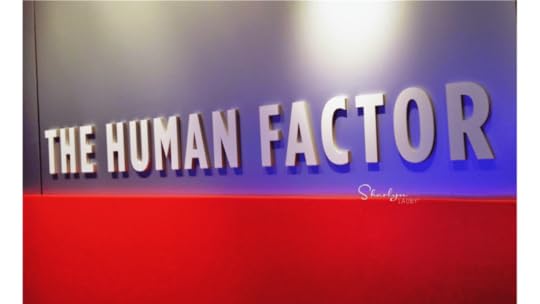
Estimated reading time: 3 minutes
By definition, a strategy is “a plan of action or policy designed to achieve an overall goal.” So, if we want to communicate better, we would have a communications strategy. Or if we want to manage our finances better, then we’d have a financial strategy.
And if we want to understand our customers, candidates, and employees better, it might make sense to have an empathy strategy.
During this year’s Society for Human Resources Management (SHRM) Talent conference, keynote speaker Amy Gallo, contributing editor at Harvard Business Review, talked about making empathy a strategy. Empathy is the practice of putting ourselves in someone else’s shoes for better understanding. It’s not the same as sympathy or compassion, which are important. Empathy allows us to build stronger relationships with others because we can understand how someone is feeling or thinking.
But for empathy to be a strategy, organizations would need to bring empathy into the conversation more. No different than when the organization says we need to focus on expense control. Then we talk about expense control. For example, when it comes to empathy:
In talent acquisition, do recruiters and hiring managers practice empathy? Meaning, do we remember what it was like to look for a new job? Do we remember being nervous going into an interview? And the challenges of negotiating a new salary, hoping that we get it right?
From a training perspective, do coaches, facilitators, and instructors remember what it’s like to learn something new? Or to be called on in a training session and freeze because we hope we answer the question correctly?
When it comes to performance, do managers remember the pit in your stomach when the boss says, “stop by my office later” and doesn’t explain why? Or the disappointment when you really work hard on a project and never hear a thank you?
And from a customer service perspective, do we remember the feeling when someone tells us, “Sorry, that’s our company policy.” Or “I’m not authorized to give you a refund.” And on the flip side, do we remember what it feels like when a customer says, “Thank you so much. This is exactly what I was looking for.”
If we truly remember what it’s like to be a candidate, employee, or customer, then would we hire differently, design training programs differently, coach and mentor differently, and even deliver customer service differently? And by differently, I mean better. With more empathy.
Organizations have an opportunity to make stronger connections with candidates, employees, and customers by demonstrating more empathy. But that means making empathy more prominent in business conversations and activities.
It also means making sure that employees understand what empathy is and that they’re given opportunities to practice empathy in a safe environment. It’s really easy to recite the definition of empathy. It’s very difficult to do it. Empathy takes practice.
Individuals and organizations should think about how they can incorporate empathy into their professional and business strategy. They find ways to actually do it!
Image captured by Sharlyn Lauby while exploring the streets of Las Vegas, NV
The post Empathy As a Strategy In Organizations Today – hr bartender appeared first on hr bartender.
Employment Tax Processing: Just Because You Can Doesn’mpathy As a Strategy In Organizations Today –t Mean You ShEmployment Tax Processing: Just Because You Can Doesn�����������������’t Mean You Should

Estimated reading time: 3 minutes
By definition, a strategy is “a plan of action or policy designed to achieve an overall goal.” So, if we want to communicate better, we would have a communications strategy. Or if we want to manage our finances better, then we’d have a financial strategy.
And if we want to understand our customers, candidates, and employees better, it might make sense to have an empathy strategy.
During this year’s Society for Human Resources Management (SHRM) Talent conference, keynote speaker Amy Gallo, contributing editor at Harvard Business Review, talked about making empathy a strategy. Empathy is the practice of putting ourselves in someone else’s shoes for better understanding. It’s not the same as sympathy or compassion, which are important. Empathy allows us to build stronger relationships with others because we can understand how someone is feeling or thinking.
But for empathy to be a strategy, organizations would need to bring empathy into the conversation more. No different than when the organization says we need to focus on expense control. Then we talk about expense control. For example, when it comes to empathy:
In talent acquisition, do recruiters and hiring managers practice empathy? Meaning, do we remember what it was like to look for a new job? Do we remember being nervous going into an interview? And the challenges of negotiating a new salary, hoping that we get it right?
From a training perspective, do coaches, facilitators, and instructors remember what it’s like to learn something new? Or to be called on in a training session and freeze because we hope we answer the question correctly?
When it comes to performance, do managers remember the pit in your stomach when the boss says, “stop by my office later” and doesn’t explain why? Or the disappointment when you really work hard on a project and never hear a thank you?
And from a customer service perspective, do we remember the feeling when someone tells us, “Sorry, that’s our company policy.” Or “I’m not authorized to give you a refund.” And on the flip side, do we remember what it feels like when a customer says, “Thank you so much. This is exactly what I was looking for.”
If we truly remember what it’s like to be a candidate, employee, or customer, then would we hire differently, design training programs differently, coach and mentor differently, and even deliver customer service differently? And by differently, I mean better. With more empathy.
Organizations have an opportunity to make stronger connections with candidates, employees, and customers by demonstrating more empathy. But that means making empathy more prominent in business conversations and activities.
It also means making sure that employees understand what empathy is and that they’re given opportunities to practice empathy in a safe environment. It’s really easy to recite the definition of empathy. It’s very difficult to do it. Empathy takes practice.
Individuals and organizations should think about how they can incorporate empathy into their professional and business strategy. They find ways to actually do it!
Image captured by Sharlyn Lauby while exploring the streets of Las Vegas, NV
The post Empathy As a Strategy In Organizations Today – hr bartender appeared first on hr bartender.
Empathy As a Strategy In Organizations Today – hr bartender

Estimated reading time: 3 minutes
By definition, a strategy is “a plan of action or policy designed to achieve an overall goal.” So, if we want to communicate better, we would have a communications strategy. Or if we want to manage our finances better, then we’d have a financial strategy.
And if we want to understand our customers, candidates, and employees better, it might make sense to have an empathy strategy.
During this year’s Society for Human Resources Management (SHRM) Talent conference, keynote speaker Amy Gallo, contributing editor at Harvard Business Review, talked about making empathy a strategy. Empathy is the practice of putting ourselves in someone else’s shoes for better understanding. It’s not the same as sympathy or compassion, which are important. Empathy allows us to build stronger relationships with others because we can understand how someone is feeling or thinking.
But for empathy to be a strategy, organizations would need to bring empathy into the conversation more. No different than when the organization says we need to focus on expense control. Then we talk about expense control. For example, when it comes to empathy:
In talent acquisition, do recruiters and hiring managers practice empathy? Meaning, do we remember what it was like to look for a new job? Do we remember being nervous going into an interview? And the challenges of negotiating a new salary, hoping that we get it right?
From a training perspective, do coaches, facilitators, and instructors remember what it’s like to learn something new? Or to be called on in a training session and freeze because we hope we answer the question correctly?
When it comes to performance, do managers remember the pit in your stomach when the boss says, “stop by my office later” and doesn’t explain why? Or the disappointment when you really work hard on a project and never hear a thank you?
And from a customer service perspective, do we remember the feeling when someone tells us, “Sorry, that’s our company policy.” Or “I’m not authorized to give you a refund.” And on the flip side, do we remember what it feels like when a customer says, “Thank you so much. This is exactly what I was looking for.”
If we truly remember what it’s like to be a candidate, employee, or customer, then would we hire differently, design training programs differently, coach and mentor differently, and even deliver customer service differently? And by differently, I mean better. With more empathy.
Organizations have an opportunity to make stronger connections with candidates, employees, and customers by demonstrating more empathy. But that means making empathy more prominent in business conversations and activities.
It also means making sure that employees understand what empathy is and that they’re given opportunities to practice empathy in a safe environment. It’s really easy to recite the definition of empathy. It’s very difficult to do it. Empathy takes practice.
Individuals and organizations should think about how they can incorporate empathy into their professional and business strategy. They find ways to actually do it!
Image captured by Sharlyn Lauby while exploring the streets of Las Vegas, NV
The post Empathy As a Strategy In Organizations Today – hr bartender appeared first on hr bartender.
July 13, 2023
Cover Letters Need a Purpose to Be Useful [Poll Results]
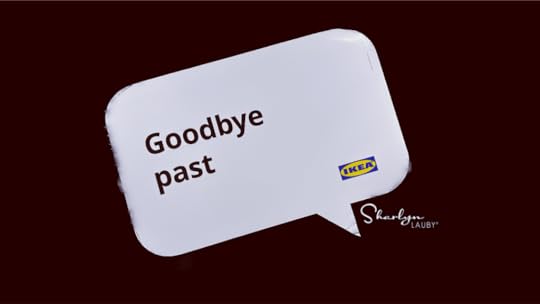
Estimated reading time: 2 minutes
A few weeks ago, I asked the question “Are Cover Letters Still Relevant?” I must admit, I was expecting a lively debate but that didn’t happen. Which might explain our poll results.
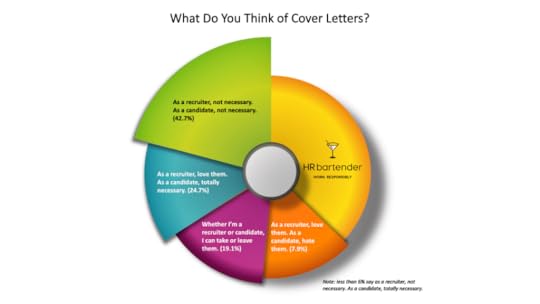
But that made me wonder, if recruiters don’t feel cover letters are necessary and candidates don’t feel that cover letters are necessary…then why have them? My original question came from articles talking about using ChatGPT to write cover letters. So why are people writing articles expressing concerns about using artificial intelligence (AI) for a document that people don’t find necessary?
Then it occurred to me that maybe people feel that cover letters aren’t necessary because they lack a purpose. And if we want them to be necessary, then they need a purpose. I’ve always felt that cover letters are a way to introduce ourselves. If there are several candidates with similar work and educational experience, a cover letter might help a person stand out.
Since this whole conversation started because of AI, I asked Bard, Google’s artificial intelligence chatbot about cover letters and it mentioned one reason that stuck out for me. Cover letters allow a candidate to showcase their personality. In general, resumes have a format and there’s nothing wrong with that. But a cover letter allows a person to show a bit of themselves. It could also be a place to communicate in your own words why you want this job or to work at this particular organization.
I’m not here to sell anyone on writing (or not writing) cover letters. But I do find it interesting that we’re having a lot of conversation about something that people don’t appear to find necessary (at least according to this unscientific poll). And I can’t figure out if that’s because we secretly want cover letters to become useful again OR because they’re just at the tail end of their usefulness in the recruiting process.
Either way, if you’re a candidate using cover letters then make them good ones. Don’t just rehash your resume in a letter format. And if you’re a recruiter evaluating a candidate based on their cover letter, have solid criteria for doing so.
The post Cover Letters Need a Purpose to Be Useful [Poll Results] appeared first on hr bartender.
July 11, 2023
Employment Tax Processing: Just Because You Can Doesn’mpathy As a Strategy In Organizations Today –t Mean You ShEmployment Tax Pr

Estimated reading time: 5 minutes
(Editor’s Note: Today’s article is brought to you by our friends at ADP , a comprehensive global provider of cloud-based human capital management (HCM) solutions. You can stay up to date on HCM topics with the ADP Spark blog . Check it out when you have a chance. And enjoy the read.)
One of the lessons that I had to learn as a consultant was just because I can do something doesn’t mean I should. A great example of this is my taxes. Can I prepare my own taxes? Yes, I can. But there are a couple of reasons that I choose to get professional help instead.
I need to use my time wisely. The time I spend doing tax-related stuff could be better spent generating revenue by working on client projects or building my business.I must keep my employment tax knowledge current. Payroll tax is complex and always changing. There are people and organizations who do nothing but focus on payroll taxes and they have to stay on top of the latest changes.The same “can and should” philosophy that I’m using as a small business owner applies to larger organizations. Keep in mind this is not a headcount conversation. Let me repeat that – this isn’t a conversation about reducing headcount. Let’s use the tax discussion as an example. Only this time with employment taxes. Just because the organization can do their own employment taxes, it doesn’t always mean they should. In fact, this could be a time when it’s better if they didn’t so they reduce their compliance risk.
What are employment taxes? In the United States, employment taxes are the taxes that organizations are responsible for after they pay someone. It includes income taxes, FICA taxes (also known as the Federal Insurance Contributions Act), unemployment taxes, and more.
Can organizations file their employment taxes themselves? Sure. But more companies get them wrong than you would think. According to the U.S. Justice Department, employment tax violations represent more than $91 billion of the gross tax gap. Yes, that’s billion with a “B”.
Are there implications for not filing employment taxes on time or in the correct amount? Yes. Organizations can be subject to fines and penalties. There’s also the issue of losing trust with employees because their taxes weren’t filed. I published a reader note about this very subject earlier this year.
Bottom-line: Employment taxes are complex and changing. The consequences of not filing on time or not submitting the right amount are expensive. And I’m sure I don’t have to tell anyone that employees don’t like it when their deductions are incorrect.
So, wouldn’t it be great if organizations could get some help where employment taxes are concerned? The answer to this question is “yes”.
The good news is our friends at ADP have an employment tax service that will file and submit your payroll taxes. Before I explain the service, let me address a couple of questions.
Some people might be saying, “Yes, this is interesting but I’m in HR or I’m an ops manager and don’t have responsibility for payroll.” And I totally get it. But this is one of those things where you might not have responsibility for payroll … but you should have an opinion about it. When employees have questions about their pay, they often go to their manager or HR for answers. You want to have confidence that your process is solid.
The second question is about compatibility. I’m sure some people might be saying, “Sorry, we don’t use ADP for payroll…so that leaves us out.” Not true. ADP’s SmartCompliance Employment Tax module integrates with most major payroll systems and enterprise resource planning (ERP) systems.
Back to ADP’s employment tax service. This service offers the following:
Technology systems that will detect and flag errors in the organization’s tax information.Automated tax filings (i.e., quarterly and annual at the federal, state, and local level)24/7/365 access to filings, reports, deposits, etc.And a dedicated support team of employment tax experts, many of whom are Certified Payroll Professionals (CPP).I know it’s one thing to hear a list of benefits and another to see the results. ADP shared a great case study from Seminole Gaming, Hard Rock Support Services. Seminole Gaming is in the hospitality industry with 15,000 casino, food, and restaurant employees in 30 states. A huge challenge for Seminole Gaming was staying compliant with a multi-state operation.
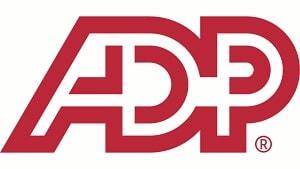
Steven Baumann, payroll controller at Seminole Gaming, said that ADP’s employment tax module was an “easy to use, plug and play” solution that allowed his team to ensure that their Form 941s and W-2s went out on time with the correct information. It also gave employees greater access to their payroll information. Instead of everything being handled via paper through the mail, it could be accessed online.
The other benefit of adding the employment tax module for Seminole Gaming was it ensured the payroll team was working on the right things. Again, this solution isn’t designed to be a headcount reduction activity. But what it can do is allow the payroll team to spend time helping employees with their financial wellbeing.
Efficiency doesn’t mean doing everything on your own.
We all know that organizations are very focused on efficiency. Truth is, they always have been. But efficiency doesn’t always mean doing everything yourself. This is a great time to explore the options that are available in terms of filing employment taxes.
You can check out ADP’s SmartCompliance Payroll Tax site. And they have a great resource guide titled “Key Considerations to Reduce Organizational Risk with Payroll Tax Management”.
Everyone wants the same thing – to pay our tax obligations on time and pay the right amount. The good news is we don’t have to (and shouldn’t) figure it out all by ourselves.
The post Employment Tax Processing: Just Because You Can Doesn’t Mean You Should appeared first on hr bartender.
Employment Tax Processing: Just Because You Can Doesn’t Mean You Should

Estimated reading time: 5 minutes
(Editor’s Note: Today’s article is brought to you by our friends at ADP , a comprehensive global provider of cloud-based human capital management (HCM) solutions. You can stay up to date on HCM topics with the ADP Spark blog . Check it out when you have a chance. And enjoy the read.)
One of the lessons that I had to learn as a consultant was just because I can do something doesn’t mean I should. A great example of this is my taxes. Can I prepare my own taxes? Yes, I can. But there are a couple of reasons that I choose to get professional help instead.
I need to use my time wisely. The time I spend doing tax-related stuff could be better spent generating revenue by working on client projects or building my business.I must keep my employment tax knowledge current. Payroll tax is complex and always changing. There are people and organizations who do nothing but focus on payroll taxes and they have to stay on top of the latest changes.The same “can and should” philosophy that I’m using as a small business owner applies to larger organizations. Keep in mind this is not a headcount conversation. Let me repeat that – this isn’t a conversation about reducing headcount. Let’s use the tax discussion as an example. Only this time with employment taxes. Just because the organization can do their own employment taxes, it doesn’t always mean they should. In fact, this could be a time when it’s better if they didn’t so they reduce their compliance risk.
What are employment taxes? In the United States, employment taxes are the taxes that organizations are responsible for after they pay someone. It includes income taxes, FICA taxes (also known as the Federal Insurance Contributions Act), unemployment taxes, and more.
Can organizations file their employment taxes themselves? Sure. But more companies get them wrong than you would think. According to the U.S. Justice Department, employment tax violations represent more than $91 billion of the gross tax gap. Yes, that’s billion with a “B”.
Are there implications for not filing employment taxes on time or in the correct amount? Yes. Organizations can be subject to fines and penalties. There’s also the issue of losing trust with employees because their taxes weren’t filed. I published a reader note about this very subject earlier this year.
Bottom-line: Employment taxes are complex and changing. The consequences of not filing on time or not submitting the right amount are expensive. And I’m sure I don’t have to tell anyone that employees don’t like it when their deductions are incorrect.
So, wouldn’t it be great if organizations could get some help where employment taxes are concerned? The answer to this question is “yes”.
The good news is our friends at ADP have an employment tax service that will file and submit your payroll taxes. Before I explain the service, let me address a couple of questions.
Some people might be saying, “Yes, this is interesting but I’m in HR or I’m an ops manager and don’t have responsibility for payroll.” And I totally get it. But this is one of those things where you might not have responsibility for payroll … but you should have an opinion about it. When employees have questions about their pay, they often go to their manager or HR for answers. You want to have confidence that your process is solid.
The second question is about compatibility. I’m sure some people might be saying, “Sorry, we don’t use ADP for payroll…so that leaves us out.” Not true. ADP’s SmartCompliance Employment Tax module integrates with most major payroll systems and enterprise resource planning (ERP) systems.
Back to ADP’s employment tax service. This service offers the following:
Technology systems that will detect and flag errors in the organization’s tax information.Automated tax filings (i.e., quarterly and annual at the federal, state, and local level)24/7/365 access to filings, reports, deposits, etc.And a dedicated support team of employment tax experts, many of whom are Certified Payroll Professionals (CPP).I know it’s one thing to hear a list of benefits and another to see the results. ADP shared a great case study from Seminole Gaming, Hard Rock Support Services. Seminole Gaming is in the hospitality industry with 15,000 casino, food, and restaurant employees in 30 states. A huge challenge for Seminole Gaming was staying compliant with a multi-state operation.

Steven Baumann, payroll controller at Seminole Gaming, said that ADP’s employment tax module was an “easy to use, plug and play” solution that allowed his team to ensure that their Form 941s and W-2s went out on time with the correct information. It also gave employees greater access to their payroll information. Instead of everything being handled via paper through the mail, it could be accessed online.
The other benefit of adding the employment tax module for Seminole Gaming was it ensured the payroll team was working on the right things. Again, this solution isn’t designed to be a headcount reduction activity. But what it can do is allow the payroll team to spend time helping employees with their financial wellbeing.
Efficiency doesn’t mean doing everything on your own.
We all know that organizations are very focused on efficiency. Truth is, they always have been. But efficiency doesn’t always mean doing everything yourself. This is a great time to explore the options that are available in terms of filing employment taxes.
You can check out ADP’s SmartCompliance Payroll Tax site. And they have a great resource guide titled “Key Considerations to Reduce Organizational Risk with Payroll Tax Management”.
Everyone wants the same thing – to pay our tax obligations on time and pay the right amount. The good news is we don’t have to (and shouldn’t) figure it out all by ourselves.
The post Employment Tax Processing: Just Because You Can Doesn’t Mean You Should appeared first on hr bartender.
July 9, 2023
5 Steps to Become an Effective Adopter – HR Bartender
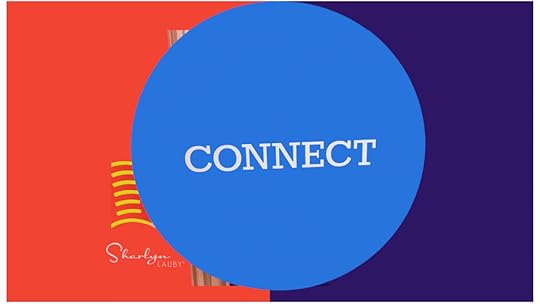
Estimated reading time: 4 minutes
I’ve been thinking about the term “effective adopter” over the past few months. Many of us have experimented with new technologies like ChatGPT, Bluesky Social, and now Threads. It reminded me of a presentation I heard years ago. The speaker talked about technology and change using the term “burning platform”.
Quick history lesson: The term “burning platform” originated in 1988 by Daryl Conner, an organizational change consultant. It’s based on a story about Andy Mochan, an oil rig crew member, working in the North Sea off the coast of Scotland. The oil rig had an explosion. Mochan was faced with the decision of dying in the fire or jumping fifteen stories into the freezing seas, where his chances of survival were slim at best. Mochan was quoted as saying, “It was either jump or fry.” He jumped. And he survived.
Back to technology and change. Right now, organizations (and individuals) are making decisions because the cost of staying where they are (i.e., the status quo) is greater than the cost of adopting something new. And I can see this concept applying not only to technology but other things as well. How many organizations or individuals are getting dragged into the modern business world?
While being faced with a dire situation might help create much needed change, this is certainly not ideal decision-making. Ultimately, individuals and organizations need to figure out how to become “effective adopters”. Not everyone has to be an early adopter, but you certainly don’t want to be so late to the party that you can’t catch up. To become an effective adopter, consider these five steps:
Recognize the trend. One way to see the next big thing is to notice what people are talking about. Even if they’re talking about what a ridiculous idea something might be. That could be a conversation worth investigating.Research the trend. Once you have identified a potentially viable trend or idea, do your homework. It’s perfectly okay to decide for yourself whether something is good for you or your organization. Find out what others are doing and what they claim are the benefits and challenges.Make a commitment to try something new. If the research indicates the possibility of a gain, find a way to conduct your own experiment. Define what you’re planning to do and the resources you’re prepared to commit. Also identify what result or outcome you are hoping to achieve.Participate at a high level. It might be tempting at the first sign of difficulty to give up on the experiment. “I knew this was a waste of time!” Please, resist the urge. Give the experiment your full attention. It’s possible the benefits will be realized (but not immediately) or an unanticipated benefit emerges. Evaluate results. Even if you decide not to move forward, my guess is you will learn a lot from the experiment. For one thing, you’ll be knowledgeable about the topic and aware of trend changes.For example, let’s go back to one of the technologies I mentioned at the beginning of the article – Threads. On the surface, it looks like Twitter Lite. And you say to yourself, “I don’t need another social media platform in my life.” Or “I’m tired of all the retargeting ads”. But as time goes on, you hear more friends and colleagues talking about Threads. So, you decide to investigate. You learn that over 30 million people have downloaded the app, it’s easy to set up if you have an Instagram account, and there’s currently no advertising. Based on that, you decide to give it a try and see what happens.
It’s possible that after a month or so, you’ll decided that you still don’t understand how people have time for Threads and you deactivate your account. Or maybe, you’ll reconnect with friends and colleagues, discover distribution tools like Buffer, and now, you’re getting the hang of it and seeing the results you were looking for.
New technologies are not going away. Change isn’t going away. The key to success is figuring out how to be an effective adopter.
P.S. Speaking of Bluesky Social and Threads, you can find HR Bartender on both networks. I hope you’ll connect with us there! We can figure them out together.
HR Bartender on Bluesky Social – https://bsky.app/profile/hrbartender.bsky.social
HR Bartender on Threads – https://www.threads.net/@hrbartender
Image captured by Sharlyn Lauby while exploring the streets of Las Vegas, NV
The post 5 Steps to Become an Effective Adopter – HR Bartender appeared first on hr bartender.
July 6, 2023
Force Field Analysis: What Is It and Why Use It

Estimated reading time: 4 minutes
No, I’m not talking about something out of Star Wars here. When we have to make a decision, one of the methods we use is a T-chart, which is basically making a large T on a piece of paper and listing the pros on one side and the cons on another. The idea being if the pros / advantages / benefits outweigh the cons / disadvantages / negatives then we should do it. Otherwise, we shouldn’t.
Today, I want to share an alternative to the T-chart. One that might offer a better assessment of the decision and lead to better outcomes. It’s called a force field analysis. Quick history lesson: the force field analysis was developed by social psychologist Kurt Lewin back in the 1950s. Lewin is also the author of the 3-step change model (Unfreeze-Change-Refreeze).
Back to the force field analysis. When we’re trying to make a decision or set a goal, there are “forces” that drive us to do it and “forces” that restrain us. Hence, when we create the T-chart of pros and cons, that’s what we’re doing. We’re listing the driving forces (pros) and restraining forces (cons).
But here’s where the force field and T-chart differ. In a T-chart, we might be tempted to view all pros and cons as equal. So, if we have 10 pros and 1 con, we might say “let’s do it” because there are more benefits than negatives. The reality could be that the sum of the 10 benefits is less than the 1 negative.
In a force field analysis, we acknowledge that all driving forces and restraining forces are not equal. So, in addition to listing the advantages and disadvantages, we assign them a strength (aka “force”). Then, we can evaluate the results.
If the driving forces outweigh the restraining forces, then it makes sense to proceed with the decision or goal. If the restraining forces outweigh the driving forces, then we could decide not to proceed. But there’s also another option. Is it possible that we can reduce the “force” of the restraining forces? Meaning, can we minimize the negative and change the situation, so the driving forces are back on top?Lastly, it’s possible that the forces could be relatively equal. If they are, is there a way to improve or maximize the impact of the driving forces so they outweigh the restraining ones.The advantage of a force field analysis is in evaluating the “force” of the items. There might be decisions that have lots of little disadvantages – but that’s the point – they’re small. If you only look at the number of them, it could keep the organization from pursuing a great opportunity. Granted, sometimes a lot of little disadvantages are a red flag. That’s why the force field analysis is such a great tool. Because we can not only evaluate the quantity of forces, but the strength of them.
One of the other things a force field analysis can do, is help us with planning. Let’s say we do a force field analysis to merge with another company. In looking at the benefits and negatives, now we can prioritize those forces that we need to address. We might want to address large forces early in the transition and smaller ones later. Or we want to address large forces in person and smaller ones can be done via a video call or via email. Establishing the strength of the force allows us to focus on the right things.
While I’ve presented today’s article on organizational decision making, a force field analysis also works for individual decisions. An employee is considering a job change – maybe they’ve been offered an internal promotion and an external opportunity. A force field analysis might help evaluate the advantages and disadvantages of each opportunity.
I have found force field analysis to be a helpful tool when making important decisions. I even created a useful document that I share with clients and I want to share it with you.
Decision making is an important skill. When we make bad decisions, they could weigh on us for a long time. Having good decision-making tools can help us ask the right questions so we make the best decisions possible.
Image captured by Sharlyn Lauby while exploring the streets of Orlando, FL
The post Force Field Analysis: What Is It and Why Use It appeared first on hr bartender.
June 29, 2023
Goal Setting Today Can Be Fun – HR Bartender

Estimated reading time: 3 minutes
Goal setting is an important activity.
Organizations use goal setting to establish priorities for the operation. This helps to create budgets and allocate resources. The organization’s goals are often used to develop department and individual goals.
Individuals also use goal setting to establish priorities. It helps them to focus on the right tasks and not get distracted, whether those distractions are internal or external.
But I think sometimes when we talk about goals or making plans, it sounds boring. We might have a vision of a bunch of people spending hours arguing over words in a goal setting exercise. Wouldn’t it be great if goal setting – especially individual goal setting – could be a little fun? Because when things are fun, we like doing them.
And in the case of goals. If working on our goals were fun, does that mean we would accomplish them?
I recently discovered a goal setting journal from a company called “The Hero’s Journal”. It’s a hardbound booklet that allows you to set goals and accomplish them similar to a hero going on a quest. Each book is filled with art and prompts to help you along the way. The prompts include a gratitude component and listing your allies as well as challenges.
There are three versions of the journal to suit your individual style – space theme with little aliens and far, far away planets, a knight complete with dragon venturing through the forest, and a school of wizardry with flying objects. Personally, I thought the themes are very unique touch.
One of the things I like about the journal is that the artwork allows me to color as I’m working on my goals, which can be a fun activity. It also encourages me to write down what I’m grateful for, and studies show practicing gratitude can help us to relieve stress and burnout.
Some readers might be saying, “This sounds really cool and fun. But I’m famous for buying stuff, using it for a few weeks, and then it starts to collect dust.” I hear you. And the folks at The Hero’s Journal thought about that too. You can get a deck of “side quests” to go with your journal. Getting a little bored? Need something different? The side quest deck is a set of 52 cards with activities on them. Some of the side quests include “call someone you haven’t spoken to in a while”, “learn something new about your town’s history”, and “watch one of your favorite movies at home”. The side quest cards match the different journal themes, so you could have a matching journal and side quests or mix it up with a space knight or some wizard aliens.
Now has always been the time of year when I start thinking about my goals for the next year. Yes, I start early. It takes time to weigh the options and to figure out the time and resource commitment. When I can add a little fun into the process, that’s great. Especially because I work remotely. In an office environment, the company might have fun signs or something talking about progress toward goals. When you’re not in the office every day, you might need something that helps you encourage yourself.
I thought The Hero’s Journal was a fun way to set goals and track progress toward accomplishing those goals. Even if you don’t buy the journal, think about your goal setting process and if there are some ways to infuse a little fun. It might help accomplish those goals faster. And make the journey rewarding and memorable.
Image captured by Sharlyn Lauby while exploring the streets of Chicago, IL
The post Goal Setting Today Can Be Fun – HR Bartender appeared first on hr bartender.
June 27, 2023
Team Building and Team Development Are Not the Same Thing

Estimated reading time: 3 minutes
I keep reading all the announcements from CEOs about returning to the office environment post-pandemic. I’m sure you’re seeing them too. One of the most common reasons they give for coming back together as a group is the team dynamic.
Today’s article isn’t to debate whether they’re right or wrong. Honestly, there are advantages and disadvantages to team interactions. But I do want to discuss giving people the training and tools to work successfully in a team. And that means understanding the difference between team building and team development.
TEAM DEVELOPMENT is about giving employees the knowledge, skills, and abilities (KSAs) to work successfully in a team. Topics might include communication skills, decision making, problem solving, etc.
TEAM BUILDING is focused on role clarification, goal setting, and relationship building. It’s focused on a specific team and their responsibilities.
So, team development activities prepare an employee for any team they’re on. They can use those skills as part of their department team as well as a special project team they’re assigned to. Team building activities help a group learn about each other and the task they are responsible for. On the other hand, team dynamics could be different depending on the group, so it makes sense to conduct team building for each new team that’s formed.
Because team development and team building serve two different purposes, this isn’t an either/or situation. Both should be done. A group that has team development but not team building might struggle because they don’t understand their role and goal. And a group who attends team building without team development might know what they’re supposed to do but not have the skills to get it done.
I know it’s very tempting to use these terms interchangeably. I’ve done it myself. However, it’s very important to understand the difference because we want our teams to succeed. Getting back to my comment in the introduction about employees returning to the office. It’s possible they have those team development skills. But over the past few years, the composition of the team has changed. Maybe it’s time for some team building to get the group excited about being in the office. And if there are team members who haven’t been able to take any team development courses because of remote work, now is the time to make that a priority.
In addition, organizations who are going to continue with hybrid and remote work need to think about how employees will participate in team development and team building activities. Just because you don’t go into an office building every day doesn’t mean you won’t be asked to work on a team. And one of the worst things organizations can do is just put a group of people in a room and say, “Viola! You’re a team.” Because it doesn’t work that way.
As I mentioned above, there are advantages and disadvantages to working in teams. In my experience, the number one reason from employees that they either love or hate teamwork is the team dynamic. Set employees up for success by giving them the tools and training.
Image captured by Sharlyn Lauby while exploring the streets of Gainesville, FL
The post Team Building and Team Development Are Not the Same Thing appeared first on hr bartender.
Sharlyn J. Lauby's Blog
- Sharlyn J. Lauby's profile
- 10 followers



